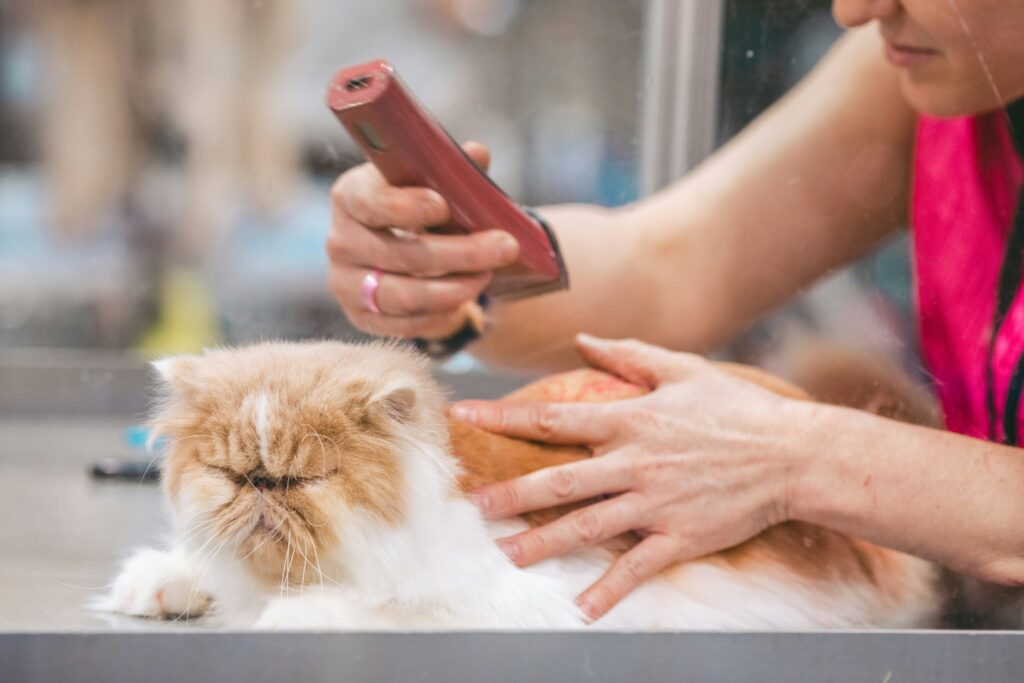Smart Collars Are Smarter Than Ever
Pet wearables have undergone a serious upgrade in recent months. No longer basic GPS trackers, today’s smart collars now serve as all-in-one devices—offering pet owners real-time insights into their furry companions’ health, activity levels, and even potential medical concerns.
What’s New in Smart Collar Tech
Modern smart collars go far beyond location tracking. Here’s what’s built into many of the latest models:
- GPS tracking that’s more precise and faster to update
- Health monitoring that tracks heart rate, respiratory patterns, and temperature
- Activity and sleep tracking to give a full picture of your pet’s routine and behavior
These features aren’t just flashy add-ons—they provide tangible benefits for early detection and informed care.
Data That Makes a Difference
Early detection is one of the strongest selling points of this tech. With continuous biometric data, pet owners can catch signs of illness or distress even before physical symptoms appear.
Top benefits include:
- Alerts if your pet’s vitals fall outside normal ranges
- Activity patterns to detect lethargy or anxiety
- Data you can share directly with your vet for faster diagnostics
What to Look for in 2024
As smart collars become more popular, choosing the right one depends on knowing what really matters. Here are the key features to consider:
- Battery Life: Look for collars that hold a charge for at least a week with full tracking enabled
- Data Accuracy: Opt for models with vet-tested metrics and minimal lag in biometric readings
- Comfort and Fit: Materials and sizing should fit your breed and size properly
- Privacy Controls: Know how your data is stored and who can access it
Smart collars are moving from ‘nice-to-have’ to ‘need-to-have’—and understanding the tech behind them helps ensure both your peace of mind and your pet’s wellbeing.
AI-Driven Pet Companions
Smarter Companionship for Pets
The pet tech world took a futuristic turn this month with a range of AI-driven innovations designed to entertain, comfort, and even support pets emotionally. What once seemed like a novelty—robotic pet toys and interactive devices—is evolving into tools that offer real behavioral and bonding value.
What’s New: Interactive Robots & Voice-Responsive Toys
Recent releases show that playtime isn’t just about tossing a ball anymore. AI-powered companions are responding to cues, adapting to individual pet preferences, and creating ongoing engagement.
Key innovations include:
- Voice-Activated Toys: Devices that respond to your pet’s bark or meow with movement, sounds, or treat dispensing.
- Robotic Playmates: Rolling, jumping, and obstacle-sensing toys that keep pets engaged even when owners are away.
- Learning Algorithms: Companions that adapt over time to better match your pet’s play style and energy levels.
Are They the Real Deal—or Just Digital Distraction?
The debate continues: are these tools enhancing pet well-being or simply adding noise to an already crowded toy bin? According to behaviorists, it depends on the implementation:
- Proven Benefits: Many experts agree that well-designed AI companions can reduce anxiety, especially for pets experiencing separation stress.
- Potential Concerns: Others warn that over-reliance on tech may reduce essential human-animal bonding time.
What matters most, according to specialists, is moderation—and integrating these devices into daily routines, not replacing them.
This Month’s Standouts
These AI-driven companions caught attention in the pet tech space:
- PetBot Nova: A companion toy that uses facial recognition to deliver different responses based on your pet’s mood.
- WagMate Mini: A compact, voice-responsive toy blend of motion, sound, and scent that encourages active engagement.
- MeowTrack Echo: Designed for cats, this device uses AI to simulate prey-like movements and reward persistence.
These launches show just how much intelligence — and creativity — is now going into designing smarter, more responsive pet tools.
Feeding Tech: Fresh, Fast, Tailored
Not all pet feeders are built the same—and in 2024, the smarter ones are stepping up. We’re seeing a new wave of feeders that don’t just spit out kibble on a timer, but actually adjust portion sizes based on your pet’s weight, breed, and activity level. Some models even track meals by syncing with your pet’s wearable, flagging problems like skipped meals or abnormal eating patterns. This isn’t just convenience—it’s peace of mind built into your daily routine.
On the meal-planning front, subscription services are adding serious credibility. Backed by licensed vets and animal nutritionists, these plans offer personalized recipes and pre-portioned meals delivered to your door. It’s fresh food dialed in for long-term health, not just a trendy upgrade.
So, what’s actually worth your cash? Devices like the PetLibra SmartFeeder and the Pawsy Pro make a solid case—they offer real portion analytics and app integration without going overboard on price or setup. Skip the flashy touchscreens and clunky designs. The best feeding tech does its job quietly and well, letting you spend your time where it should be: with your pet, not micromanaging their dinner.
Vet-Tech at Home
Home diagnostics for pets have come a long way from guesswork and gut feelings. Today’s at-home diagnostic kits let pet owners collect urine, saliva, or even stool samples for quick analysis—some with instant app results, others shipped off to labs. The big win? Catching early signs of issues like UTIs, kidney problems, or dietary imbalances before they turn into full-blown emergencies. That means fewer surprise vet bills and a more proactive approach to wellness.
Remote vet consultations have also shed their pandemic-era training wheels and become a normalized part of care. Platforms now offer actionable insights, video assessments, and follow-up plans—not just vague guidance. For rural pet owners or those with anxious animals, virtual care isn’t just convenient—it’s a game changer.
But there’s a line. Constant monitoring and daily data checks can tip from helpful to obsessive. Not every sniffle or nap is a crisis. The best approach? Use these tools to stay ahead, not spiral. Vet-tech wins when it supports real-life care, not replaces common sense.
The Wearable Wellness Trend
Pet wearables have come a long way from clip-on pedometers and novelty sweaters. Now we’re looking at fitness trackers that log steps, sleep cycles, and even heart rate. Anxiety vests with biometric feedback are also picking up traction, marketed as a blend of comfort and data-driven insight. Some work. Some are fluff with a high price tag.
So what’s worth the investment? Trackers that sync with a smartphone app and show trends over time can be helpful—especially if your pet has known health issues. You’ll spot behavior changes early, which can mean early vet visits instead of emergencies. On the flip side, wearable tech that promises generalized mood readings or mysterious behavior scores? Usually more gimmick than game-changer.
Integrating these tools into daily routines is where impact happens. A fitness tracker is only useful if you’re checking the data and adjusting your dog’s walks or feeding schedule. An anxiety vest won’t do much tossed in a drawer after one try. The key is consistency. Like any tech in this space, these tools should enhance—not replace—good old-fashioned attention and care.
Spotlight: Pandemic’s Lasting Impact on Pet Tech
The pandemic sparked an unprecedented wave of pet adoptions. With people stuck at home, many found companionship in four-legged additions to the household—and they weren’t just temporary flings. This surge didn’t just reshape living rooms, it reshaped markets. Tech companies quickly caught on, pivoting to meet the needs of millions of new pet owners who suddenly cared—deeply—about tracking, feeding, monitoring, and bonding with their animals.
The result? A massive appetite for pet-centric tech. From smart bowls to GPS-enabled collars, demand soared as routines tightened around daily walks, tailored feeding, and digital vet access. But what started in crisis mode has settled into normalcy. What’s changed is the baseline. Today’s pet owners expect more than squeaky toys and basic care—they want data, durability, and support. And they’re building long-term habits around it.
For more context on how this wave built momentum and changed expectations, check out The Rise of Pet Adoption During Pandemic Times.
What to Watch Next Month
The pet tech pipeline shows no signs of slowing. Coming soon: location-aware feeding stations, newer-gen smart collars with improved biometric tracking, and AI-enhanced behavior cams that promise more accurate mood insights than ever. Keep an eye on launches from well-funded startups like TailSync and larger brands expanding into pet tech, including Samsung’s new wearables division for animals.
But flash isn’t everything—especially when it comes to your pet’s data. With devices tracking everything from heart rate to sleeping habits, data ownership is becoming a serious issue. Some products already reserve the right to collect and sell anonymized pet data. As the legal landscape struggles to catch up, consumers need to read the fine print. Your pup’s health trends might be more lucrative than you’d think.
Finally, be aware: more tech giants are entering the pet care vertical. This could mean more polished ecosystems, but also more walled gardens and data consolidation. If Google’s Nest division or Amazon’s Ring brand starts making pet monitors, that convenience will come with trade-offs. Consumers need to think past features—who builds the device shapes how it treats your information.
Final Takeaway
Pet tech has officially crossed the line from cool toy to real tool. It’s not about showing off GPS collars or AI toys to your friends anymore—it’s about using technology to actually improve your pet’s quality of life. Whether it’s catching a health issue early thanks to tracking data or saving time with automated feeders, these tools are doing more than they used to.
That said, not every gadget with a blinking light is useful. Smart choices come down to what your specific animal needs. Got an anxious rescue dog? Maybe a biometric vest helps. Raising a chonky cat? Focus on feeding tech that actually tracks calories over time.
Bottom line: don’t get dazzled by ads or influencers pushing the latest thing. Read the fine print. Look at reviews that talk about long-term performance, reliability, and whether the tech fits into your daily life. Stay curious, but stay sharp. Your pet deserves better than impulse buys.


 Thadriel Tavendria, the founder of Pet Hub Loop, created the platform to help strengthen the bond between people and their pets. With a passion for animal welfare, he envisioned a trusted hub offering pet news, breed guides, product reviews, and training advice—making Pet Hub Loop a supportive resource for pet owners everywhere.
Thadriel Tavendria, the founder of Pet Hub Loop, created the platform to help strengthen the bond between people and their pets. With a passion for animal welfare, he envisioned a trusted hub offering pet news, breed guides, product reviews, and training advice—making Pet Hub Loop a supportive resource for pet owners everywhere.